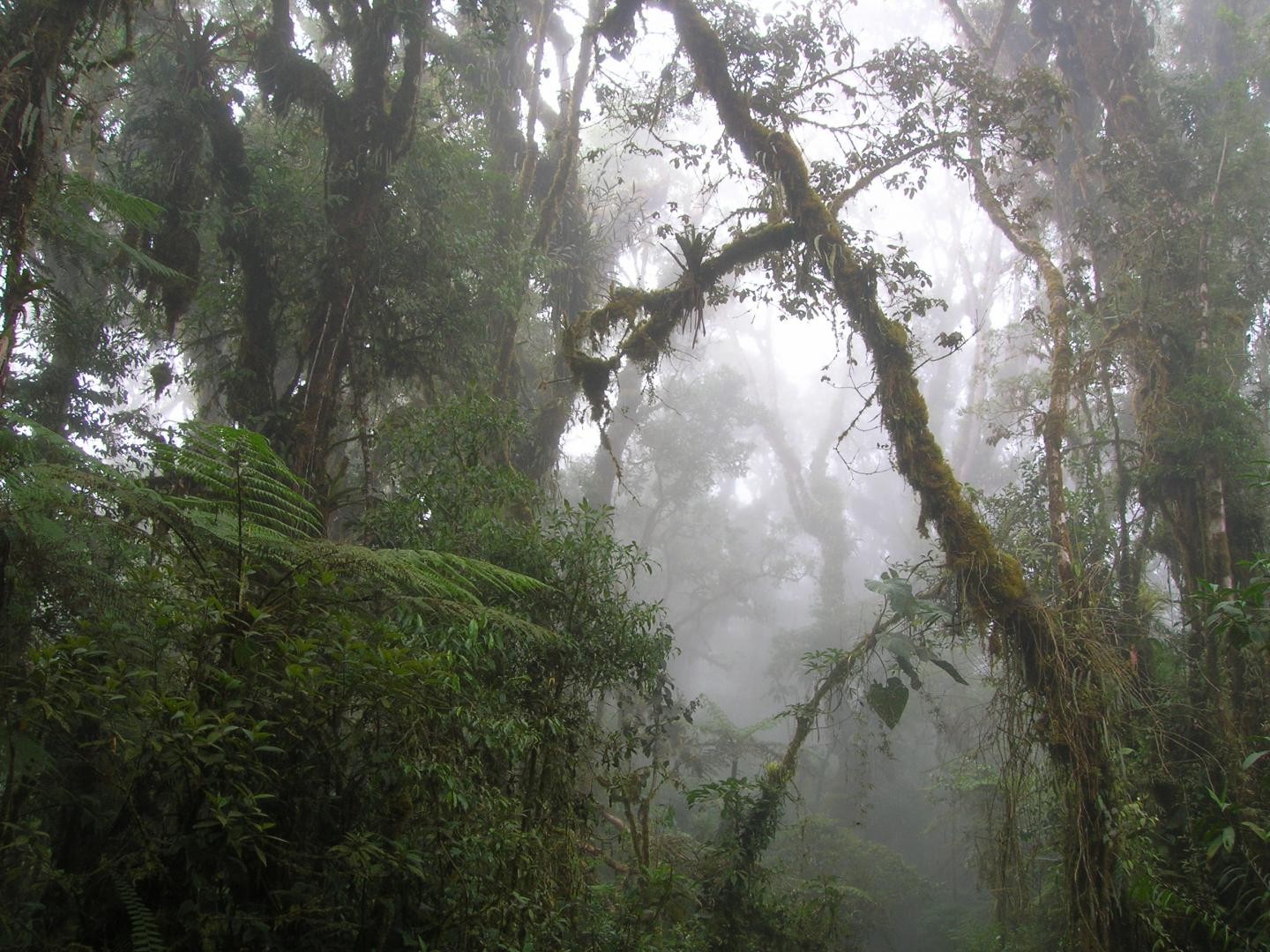

Trees and forests play a huge role in the carbon cycle, or the movement of carbon dioxide through the atmosphere. Thanks to activities like deforestation and the burning of fossil fuels, there is now 2.5 times the amount of CO2 in the atmosphere than there was before industrialization. Without forests, says Francisco Cuesta, an ecologist at La Universidad de las Américas in Ecuador, we would be dealing with even more CO2.
A study out this month in the journal Nature Communications, authored by a team of 28 scientists including Cuesta, looks at how the carbon cycling process is playing out in the tropical and subtropical forests of the Andes.
“We found that Andean forests act as carbon sinks, which mean that they are sequestering carbon from the atmosphere, and so, helping to regulate climate change,” wrote lead author Alvaro Duque, an associate professor in forest sciences at La Universidad Nacional de Colombia, in an email to Popular Science.
“The Andean region is recognized as the ‘hottest hotspot on earth,’” wrote Duque. The area harbors an astonishingly high rate of diversity as well as species that are found nowhere else on the planet. This research, he said, reinforces the region’s ecological importance.
“Previous evidence of forest carbon sinks mainly comes from temperate or lowland tropical forests,” says Kai Zhu, an assistant professor of environmental studies at UC Santa Cruz who was not involved in the research. This study, Zhu says, provides data from tropical forests at higher elevations. “It offers critical findings that Andean forests are a strong carbon sink, even offsetting carbon emissions from deforestation.”
Here’s an easy way to picture carbon sequestration, according to Cuesta: If you notice that a tree you’re familiar with has grown bigger recently, that’s because, through photosynthesis, that tree has sucked carbon from the atmosphere and transformed it into biomass. On a grand scale, this process can have huge implications. Over the past century, scientists have recognized the critical role that the Amazon, as well as lowland tropical forests in Africa and Southeast Asia, plays in removing CO2 from the atmosphere, says Cuesta. But today, the Amazon is veering dangerously close to becoming a net emitter of carbon, rather than a carbon sink; other forests have already become carbon emitters.
Scientists began to wonder, Cuesta says: If the Amazon is reducing the rate at which it is removing CO2, “what is the role of other ecosystems that are not on the lowlands?”
The study analyzed tree census data collected between 1991 and 2017 in forested plots across the Andean mountain region—including parts of Colombia, Argentina, Ecuador, Peru, and Bolivia—with elevations ranging from 500 to around 3500 meters above sea level. The team also used Google Earth Engine to analyze forest cover change between 2003 and 2014. After all trees of a certain diameter were tagged, measured, and sampled, the team used a series of equations to convert changes in tree size through time into carbon gains.
[Read more: Host a sustainable affair with these environmentally-friendly tips]
The team’s findings suggest that the Andean forests are taking in a lot of carbon. “These forests, on average, are removing and storing more carbon than the lowlands, than the Amazon,” says Cuesta. “Before, we thought it was the other way around.”
The authors suggested that a combination of factors could be at play in producing this enhanced carbon uptake, including increased CO2 in the air and recovery from stressors like landslides and natural resource extraction, which can kick off the takeover of new species that are better at locking in carbon.
Climate change is also pushing new trees up the mountains as others are dying, and those lowland trees might, in the future, be able to store more carbon, says Duque.
“Due to the need for tree species to track global warming upslope in the mountains, the Andean region could even increase the overall carbon stocks by an increase of ‘thermophilic’ species upwards, which make the whole ecosystem a potential future carbon refuge,” he wrote. In order for this to happen, the authors say, these lowland species need to be allowed to migrate upwards—which could be encouraged by restoration efforts, or, alternatively, discouraged by ecosystem fragmentation.
If warming continues, of course, Cuesta notes, this whole situation could change dramatically. “We have warmed up 1 degree celsius in the last 40 or 50 years,” he says. But if warming continues, it’s possible that at some point, “these guys will no longer function as a carbon sink.”
